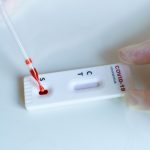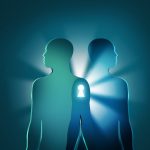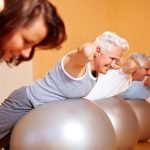Docere
Debra Gibson, ND
In Part 1, current diagnostic criteria and symptom pictures of posttraumatic stress syndromes were outlined, with an overview of the neurobiology of posttraumatic stress – the so-called “fear circuitry” – and discussion of traditional treatment approaches. Part 2 describes an emerging treatment paradigm for posttraumatic stress injury (PTSI) – individualized, holistic, patient-empowering, multidisciplinary, and aligned with core tenets of naturopathic philosophy – which affirms the place of naturopathic medicine in this constellation of care.
The Long & Winding Road to Authentic Recovery
There is general agreement in the field of trauma therapy that recovery occurs in stages. Although the number of stages varies between approaches, they are broadly organized around concepts of 1) regaining safety, stabilizing unhealthy behaviors, and destigmatizing the posttraumatic experience by becoming educated about basic trauma physiology; 2) remembering and mourning: coming to terms with traumatic history; and 3) reconnecting to self and others.1,2
Movement between stages is non-linear, and authentic recovery is achieved by multidisciplinary support over time. Despite the efforts of the Department of Veterans Affairs to establish an evidence-based, widely applicable PTSI treatment strategy, the healing of traumatized humans resists a “cookie cutter” approach.3 Instead, a model of individualized, stage-appropriate combinations of modalities and practices that evolve over time, as healing progresses, has become a kind of non-standardized standard of care for more effective treatment of complex trauma.4 Fundamentally non-cognitive modalities – such as EMDR (Eye Movement Desensitization and Reprocessing,),5 Emotional Freedom Technique (EFT, or “tapping”), mindfulness practices, guided imagery,6 trauma-sensitive yoga, biofeedback (neurofeedback and cardiac coherence training) – detour around fear-damaged neural pathways to access places in mind and body where trauma is embedded. More cognitively-based approaches, such as trauma-centered cognitive behavioral therapy and psychodynamic therapy, may then be employed to enable gradual integration of traumatic memories. Sensorimotor therapy, a newer, promising iteration of stage-cognizant trauma care, is described as a “mindfulness-based body-oriented therapy” that synthesizes cognitive, psychodynamic, Gestalt, and other psychotherapeutic models.7
Diverse though they may be, as Belleruth Naparstek notes,8 trauma-centered therapies share common therapeutic values: “1. They first and foremost find ways to re-regulate the nervous system. 2. They destigmatize and normalize the experience by explaining posttraumatic stress (PTS) as the somatic and neurophysiologic condition it is. 3. They offer simple, self-administer-able tools that empower the end-user and confer a sense of mastery and control. 4. The interventions are cast as training in skill sets, not the healing of pathology.”8
Vis Medicatrix Naturae in Trauma Care
For people on the continuum of PTSI recovery, naturopathic medicine can play an important and ongoing role in the multidisciplinary continuum of care: as an ongoing touchstone for compassionate presence, education, and informed provider referral; by offering expert guidance for self-care and healthy lifestyle practices; by providing functional testing and treatment to support healing of trauma-disrupted systems and pathways; and by “treating the whole person” using our extensive naturopathic armamentarium – from nutrition and botanicals, to homeopathic support, flower essences, acupuncture, and more – to remove obstacles and support healing.
Laboratory assessments can inform treatment strategies, affirm to the patient that there really are physiologic underpinnings to their psychic distress, and sustain motivation for compliance with the care plan by tracking change over time. Multi-point cortisol assays and urinary neuropeptide panels; “conventional lab” screening for patterns of dysglycemia and dysinsulinemia, homocysteine elevation and inflammatory markers, thyroid and sex hormone imbalance, vitamin D, magnesium, and zinc deficiency; comprehensive functional nutrient assay; digestive analysis; genomic assessment (particularly focused on genetic polymorphisms tied to inflammatory upregulation and methylation pathways, particularly those of catecholamine metabolism); and food intolerance panels to pinpoint proinflammatory foods: these are all tools with which to identify individual patterns of imbalance and more effectively “treat the cause.”
Naturopathic TAU and PTSI
Many of the fundamentals of naturopathic care – our “treatment as usual” – align well with the developing trauma-centered treatment model. Because poor habits of self-care go hand-in-hand with the posttraumatic experience (ie, a tendency to skip meals; to overdo caffeine, alcohol, sweets and refined flours and give short shrift to nutrient-dense whole foods and water; to let go of regular exercise and time spent outdoors), educating patients on the importance of attending to lifestyle fundamentals can be a first step in a turnaround for recovery. Additional macro- and micro-nutrient support in the form of a glycemic-balancing medical shake and/or supplement formula may ease the transition to healthier behaviors, reduce dysglycemic spiking of epinephrine and norepinephrine, and supply neurons with the steady stream of glucose required for stable function. Advocating an “anti-inflammatory” lifestyle is common to many naturopathic treatment strategies – emphasizing a plant-focused, toxicant-minimizing diet (informed whenever possible by testing for proinflammatory food intolerances) and personal environment – but it takes on greater importance with increasing acknowledgment of inflammation’s impact on PTSD physiology.9
A simple supplement plan, including a high-quality multiple-vitamin/mineral formula and an activated B-complex can help to stabilize body-mind systems. Omega-3 fatty acids have been of interest in treatment of psychiatric disorders, and more recently in the context of prevention and treatment of PTSI.10,11 Particularly in light of potential eicosapentaenoic acid (EPA) and docosahexaenoic acid (DHA) depletion secondary to diet and lifestyle compromise in the PTSI population, supplementation with EPA (900-1500 mg) and DHA (400-1000 mg) is indicated and may even be conservative.
Even more than is usually the case, complex protocols for the PTSI population have the potential to backfire due to overwhelm, and overly aggressive lifestyle change can amplify risk of “detox” or Jarisch Herxheimer reactions, which can dramatically increase symptoms to demoralizing effect.
Exercise increases brain oxygen supply and production of serotonin and endorphins; modulates stress; supports glycemic balance; promotes reconnection of mind and body, and can be a source of social support. Sunlight augments antidepressant vitamin D levels and stimulates balanced pineal melatonin secretion for improved sleep, mood, immune function, and anxiety reduction.12 A walk or a hike, absorbing the grounding energies of earth, water, sun, sky, trees, and wild things – puts us in touch with what the poet Mary Oliver has called our “place in the family of things.”13 Rhythmic movement, breath-work (pranayama, chanting, singing), yoga, qi gong, and martial arts; there are many ways to promote “bottom-up” regulation of body-mind imbalance.14
Restoring the HPA Axis
I’ve often thought of the adrenal glands as the interface of mind and body, and it’s not surprising that in PTSI-focused research there is increasing awareness of connections between HPA axis (hypothalamic/pituitary/adrenal axis) disruption, and glucocorticoid, catecholamine (particularly dopamine and norepinephrine), and serotonin dysregulation.15,16 Naturopathic protocols for neuroendocrine repair – informed by 4-point cortisol, melatonin, urinary neurotransmitter, and genomic analysis – enhance restoration of neuroendocrine balance and symptom amelioration, with small risk of harm.
Basic nutrient support for restoring the HPA axis and improving cortisol balance (particularly nighttime output, to reduce sleep-latency insomnia) could include bedtime dosing of phosphatidylserine (200-300 mg), glycerophosphocholine (400 mg) and acetyl-S-carnitine (500 mg). Two observations of note: 1) some “adrenal support” formulae contain ingredients that may stimulate cortisol output and may therefore be contraindicated, at least until sleep, mood lability, and other symptoms of neuroendocrine imbalance have been well stabilized; and 2) because of the intensity of posttraumatic symptomatology and the variable and sometimes extended timeframes for improvement (in my experience, ranging from a few days to 2-3 months), additional short- to moderate-term strategies for improving sleep quality and reducing anxiousness are often in order.
Reducing Anxiousness, Improving Sleep
The compound 4-amino-3-phenylbutyric acid (phenibut), an anxiolytic metabolite of gamma-aminobutyric acid (GABA) with primarily GABA-B receptor effects (similar to those of baclofen), originated as part of Russia’s space program in the 1960s to temper stress in cosmonauts. Although there are reports in the literature associating excessive sedation and withdrawal syndromes with phenibut,17 with reasonable dosing (250-500 mg daily), and in my own clinical experience over more than a decade of prescribing it as part of a proprietary formulation (phenibut with taurine and 5-hydroxytryptophan [5-HTP]), phenibut can provide dramatic and rapid improvement in problems with sleep onset, sleep interruption, and anxiousness. I have not observed side effects other than rare instances of morning-after grogginess.
Nutrient support for better sleep and reduced anxiety includes the B-vitamin, inositol, supplied in divided doses of as much as 16 grams per day, and magnesium supplementation of 200-500 mg or more per day (as “ionized” citrate powder or glycinate capsules; in divided doses; and subject to bowel tolerance), especially if supported by RBC levels of less than 5.4 mg/dL.
Many botanicals have anxiolytic qualities. Some that are receiving attention as part of treatment strategies for posttraumatic anxiety, insomnia, and depression include the adaptogenic herb Rhodiola rosea,18 prescribed in higher-dose, high-percentage (15%) rosavin formulations to avoid the potential cortisol-stimulating effect of lower doses; Withania somnifera (ashwagandha),19 prescribed traditionally in powder form as a 5-g bedtime dose20 or in smaller doses as a 2:1 or 5:1 extract; and Bacopa monnieri (200-600 mg per day of a 20% bacoside formula). Mechanisms driving their effects – an increasing focus of research – include modulating effects on cortisol and catecholamines, and stimulation of the neuroplasticity-enhancing protein BDNF (brain-derived neurotrophic factor).21
Amino acids targeting neurotransmitter and catecholamine imbalance can have potent modulating effects on PTSI symptoms. They are also relatively inexpensive and, in easy-to-take powder or chewable form, can mitigate “supplement fatigue.” Glycine, a norepinephrine antagonist (1/2-1 tsp [2-4 g] in powder form, up to 4 times per day); the GABA-A agonist taurine (1/4 tsp [about 1.5 g] as a powder, 2-3 times per day); L-theanine, a glutamate receptor antagonist derived from green tea (100-200 mg in capsule or chewable form twice daily and as needed for acute stress) may be prescribed singly, in combination, or in compound formulas with anxiolytic botanicals and nutrient cofactors. When indicated by results of neurotransmitter testing, 5-HTP (50-300 mg per day), the serotonin precursor (with its cofactor pyridoxine 5’-phosphate) may be supplied for mood enhancement and sleep-cycle normalization. (Of course, it’s appropriate to adjust treatment strategy, dosing, and the frequency of follow-up testing in the context of concurrently prescribed pharmaceuticals such as SSRIs and NSRIs.)
Cannabidiol (CBD) oil, the primary non-psychotropic compound found in Cannabis sativa, is emerging in trauma treatment as an adjunct to psychotherapy. Available in a plenitude of vehicles for administration (oil for sublingual drops or vaping, spray, suppository, tincture, and soft-gel, to name a few), CBD is also taken in varying concentrations and an even greater variety of delivery methods when combined with the psychoactive cannabis compound delta(9)-tetrahydrocannabinol (THC). CBD’s effects of reducing anxiety and pain, improving sleep and mood,22 and modulating fear memory are attributed in part to indirect effects on the endocannabinoid system, increased serotonin transmission through stimulation of serotonin (5-HT1A) receptors, and stimulation of opioid receptors.23,24 Although clinical guidelines for use of CBD for PTSI are not yet available, “grey literature” resources and professional manufacturers may be useful resources.25
Holistic Trauma-Centered Care
It is a truism that change requires action. One of the greatest impediments to healing for people suffering from PTSI is their reluctance to seek treatment, and then to not stay in treatment long enough to feel results. This is tragic, given what may be life-or-death stakes (for them and for others). What is emerging in posttraumatic care is a holistic model in line with the holism that has always been central to naturopathic philosophy. Combining multiple modalities that engage with and support healing of mind, body, and spirit – for instance, EMDR with MBSR (Mindfulness-Based Stress Reduction), trauma-centered yoga, supportive psychotherapy, and adjunctive naturopathic care – eases the hard work of authentic healing, opens a way back to a livable present, and holds real promise for posttraumatic growth and thriving.26
Trauma is hell on earth. Trauma resolved is a gift from the gods.
(Peter A. Levine)
References:
- Herman J. Trauma and Recovery: The Aftermath of Violence – From Domestic Abuse to Political Terror. New York, NY: Basic Books; 1997:218.
- Naparstek B. Note to colleagues: please stop saying post traumatic stress is incurable.July 1, 2010. Huff Post. https://www.huffingtonpost.com/belleruth-naparstek/mental-health-note-to-col_b_553096.html. Accessed February 12, 2018.
- Morris DJ. The Evil Hours: A Biography of Post-Traumatic Stress Disorder. New York, NY: Houghton Mifflin Harcourt; 2015:166-212.
- Arber C. The Three Stages of Healing Complex Trauma. Available at: https://worthit2bme.com/judith-herman-on-complex-trauma/the-three-stages-of-healing-complex-trauma/. Accessed February 28, 2018.
- What is EMDR? EMDR Institute, Inc Web site. http://www.emdr.com/what-is-emdr/. Accessed March 11, 2018.
- Naparstek B. Posttraumatic Stress PTSD Bundle. [CD or MP3 format] Available at: https://www.healthjourneys.com/posttraumatic-stress-bundle. Accessed March 5, 2018.
- Gene-Cos N, Fisher J, Ogden P, Cantrel A. Sensorimotor Psychotherapy Group Therapy in the Treatment of Complex PTSD. Ann Psychiatry Ment Health. 2016;4(6):1080. Available at: https://tinyurl.com/y8j5vz24. Accessed March 5, 2018.
- Naparstek B. Invisible Heroes: Survivors of Trauma and How They Heal. New York, NY: Bantam Dell/ Random House, Inc; 2004:206-288.
- Wang Z, Caughron B, Young MR. Posttraumatic Stress Disorder: An Immunological Disorder? Front Psychiatry. 2017;8:222.
- Matsuoka YJ, Hamazaki K, Nishi D, Hamazaki T. Change in blood levels of eicosapentaenoic acid and posttraumatic stress symptom: a secondary analysis of data from a placebo-controlled trial of omega3 supplements. J Affect Disord. 2016;205:289-291.
- Du J, Zhu M, Bao H, et al. The Role of Nutrients in Protecting Mitochondrial Function and Neurotransmitter Signaling: Implications for the Treatment of Depression, PTSD, and Suicidal Behaviors. Crit Rev Food Sci Nutr. 2016;56(15):2560-2578.
- Huang F, Yang Z, Li CQ. The melatonergic system in anxiety disorders and the role of melatonin in conditional fear. Vitam Horm. 2017;103:281-294.
- Oliver M. Wild Geese. In: Dream Work. New York, NY: Atlantic Monthly Press; 1994.
- van der Kolk B. The Body Keeps the Score: Brain, Mind, and Body in the Healing of Trauma. New York, NY: Viking/The Penguin Group (USA) LLC; 2014:262-276.
- Cooper O, Bonert V, Moser F, et al. Altered pituitary gland structure and function in posttraumatic stress disorder. J Endocr Soc. 2017;1(6):577-587.
- Daskalakis NP, Lehmer A, Yehuda R. Endocrine aspects of post-traumatic stress disorder and implications for diagnosis and treatment. Endocrinol Metab Clin North Am. 2013;42(3):503-513.
- Owen DR, Wood DM, Archer JR, Dargan PI. Phenibut (4-amino-3-phenylbutyric acid): availability, prevalence of use, desired effects, and acute toxicity. Drug Alcohol Rev. 2016;35(5):591-596.
- Panossian A, Wikman G, Sarris J. Rosenroot (rhodiola rosea): traditional use, chemical composition, pharmacology and clinical efficacy. 2010;17(7):481-493.
- Singh N, Bhalla M, de Jager P, Gilca M. An overview on ashwagandha: a Rasayana (rejuvenator) of Ayurveda. Afr J Tradit Complement Altern Med. 2011;8(5 Suppl):208-213.
- Proefrock K. Treatment of acute and chronic trauma through botanical medicine, nutrition and lifestyle modification. 2016 Medicines from the Earth: Lecture Notes. 2016:38. Symposium conference book download available at: https://tinyurl.com/yaxm3tup. Accessed March 5, 2018.
- Sangiovanni E, Brivio P, Dell’Agli M, Calabrese F. Botanicals as modulators of neuroplasticity: Focus on BDNF. Neural Plast. 2017;2017:5965371.
- Shannon S, Opila-Lehman J. Effectiveness of Cannabidiol Oil for Pediatric Anxiety and Insomnia as Part of Posttraumatic Stress Disorder: A Case Report. Perm J. 2016;20(4):108-111.
- Jukus R, Day HL, Guimarães FS, et al. Cannabidiol regulation of learned fear: implications for treating anxiety-related disorders. Front Pharmacol. 2016;7:454.
- Lee JLC, Bertoglio LJ, Guimaraes FS, Stevenson CW. Cannabidiol regulation of emotion and emotional memory processing: relevance for treating anxiety-related and substance abuse disorders. Br J Pharmacol. 2017;174(19):3242-3256.
- Project CBD. CBD User’s Manual: A Beginner’s Guide to Cannabidiol and Cannabis Therapeutics. Available at: https://www.projectcbd.org/guidance/cbd-users-manual. Accessed March 7, 2018.
- Bannink F. Post Traumatic Success: Positive Psychology and Solution-Focused Strategies to Help Clients Survive and Thrive. New York, NY: W.W. Norton & Company; 2014.
Photo by averie woodard on Unsplash
 Debra Gibson, ND, graduated from the National College of Naturopathic Medicine (NCNM, now NUNM) in 1983, and has practiced for more than 30 years. The intersection of body, mind, and metaphysics is of particular interest in her work. She currently practices in Cos Cob, CT.
Debra Gibson, ND, graduated from the National College of Naturopathic Medicine (NCNM, now NUNM) in 1983, and has practiced for more than 30 years. The intersection of body, mind, and metaphysics is of particular interest in her work. She currently practices in Cos Cob, CT.






